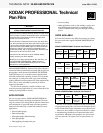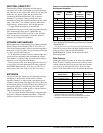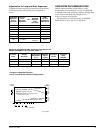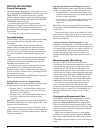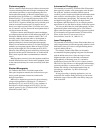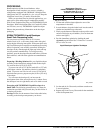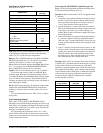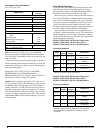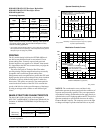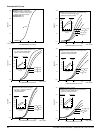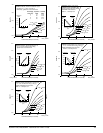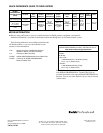
KODAK PROFESSIONAL Technical Pan Film • P-255 5
Photomicrography
The low contrast of most microscopic subjects often requires
a contrast-enhancing film-and-developer combination and
(with stained specimens) a contrast-enhancing filter. For
routine photomicrography of H and E-stained tissue, try a
broad-band yellow-green filter (e.g., a KODAK WRATTEN
Gelatin Filter No. 11) at a tungsten exposure index of 50,
developed in HC-110 Developer (Dilution B) for 8 minutes
at 68°F (20°C). Negatives should print easily and with good
contrast on normal-contrast paper. (If negatives are too
dense, use a higher exposure index; if too thin, use a lower
one. If contrast is too low, increase the development time; if
too high, decrease the time.)
For phase-contrast and differential-contrast techniques,
try a tungsten exposure index of 100, and develop in HC-110
Developer (Dilution D) for 6 minutes at 68°F (20°C). (If
necessary, adjust the exposure index or development as
described above.) This method may also be suitable for
banding techniques in chromosome photomicrography.
When you want maximum contrast, as in older karyotyping
methods, use a tungsten exposure index of about 125, and
develop in Developer D-19 for 4 minutes at 68°F (20°C).
(Because of the differing spectral sensitivities of microscope
photocells and the special characteristics of Technical Pan
Films, these exposure index recommendations cannot be
exact.)
Metallographers can easily select development conditions
from the characteristic curves shown in this pamphlet, based
on the contrast index they have used successfully with other
materials.
Electron Micrography
Use Technical Pan Film to record the output of the
fiber-optic faceplate in transmission electron microscopes
and to provide optimum contrast and resolution for
biological specimens.
Make tests to determine exposures for the accelerating
voltage and magnification. Develop for 5
1
⁄
2
minutes in
Developer D-19 (1:2) at 68°F (20°C) or for 4 minutes in
Developer D-19 (full strength) at 68°F (20°C). For less
contrast, process for 8 to 12 minutes in HC-110 Developer
(Dilution B) at 68°F (20°C).
Astronomical Photography
The extended red sensitivity of Technical Pan Films makes
them especially suited to solar photography at the H-alpha
line (656 nm), and their reasonably uniform spectral
sensitivity over the visible region of the spectrum makes them
most useful for solar filtergrams. They are also useful for
lunar and planetary photography. The extremely fine grain
and high resolving power, coupled with high-contrast
development (with Developer D-19, for example) permits
reproduction of very fine detail on objects in the solar system.
You can use these films for stellar photography, but first
hypersensitize them with forming gas or silver nitrate to
improve the film response with the long exposures required.
(For information on hypersensitization of Technical Pan
Films, see the American Astronomical Society
Photo-Bulletin, Issue No. 24, 1980, No. 2.)
Laser Photography
The extended red sensitivity of these films makes them very
useful in applications in which the exposing radiation is from
helium-neon lasers (633 nm) or red-light-emitting diodes
(typically 640 to 650 nm).
For example, Technical Pan Films are frequently
recommended for photographing holograms reconstructed
with the helium-neon lasers. Since the range of scene
brightnesses that can be recorded and reconstructed
holographically is inherently great, it is sometimes
appropriate to process the film to a low contrast (contrast
index of 0.5 to 0.6). However, in holographic interferometry,
processing the film to a contrast index of 1.5 or more will
enhance the visibility of the interferometric fringe by
increasing its modulation. Try HC-110 Developer
(Dilution B).
In image-recording or plotting applications, you can
control the film contrast during processing to convert the
modulation range of the recorder to the density range you
want on the film.



